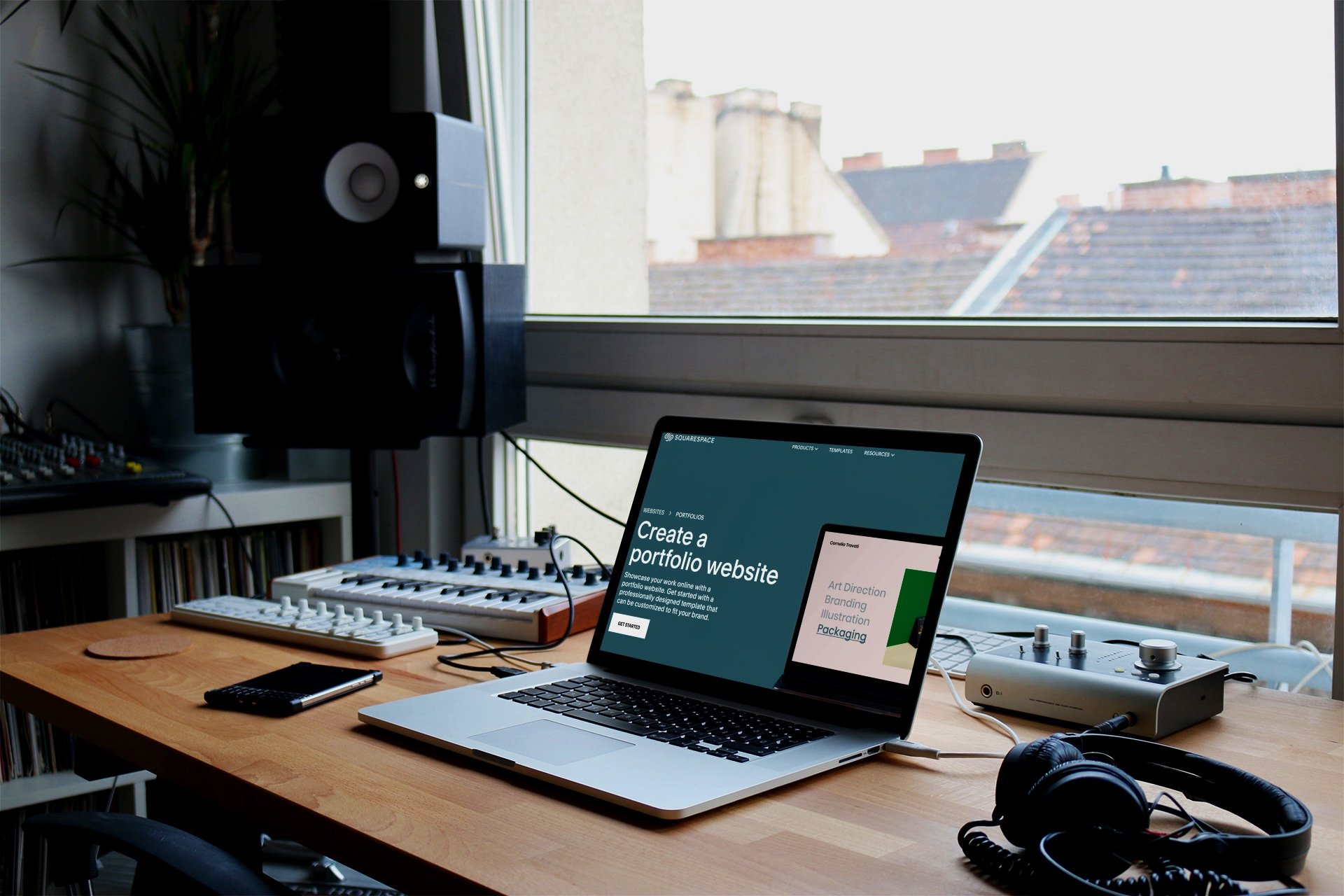How to Start A Music Blog In 5 Steps (how I grew mine)
I’m a musician and artist. I love making videos, writing and pretty much anything creative. But publishing articles online has been one of my best decisions.
So this is how to start a music blog and grow it from scratch.
Let’s get it.
Table of Contents Show
Hey there, just a heads up that some of the links in this post may be affiliate links. That means I earn a small commission. This is at no extra cost to you, but helps me keep the lights on. Thank you for your support!
Music Blogging 101 (what it is + who it’s for)
Blogging has been around for quite a while.
Did you know the first blog post was (likely) published in 1994 by then-student Justin Hall? Suffice to say, we’ve come a long way since then.
So I think most everyone has an idea of what a blog is. But what about music blogging?
A music blog is a website dedicated to music-related topics (naturally).
Like any blog, its primary purpose is to connect with readers and help them better understand specific topics.
Who Is Music Blogging For?
As a music blogger, you’ll be bringing your expertise, passion and/or experience to the table.
Music blogging is perfect for:
Musicians
Music lovers
Anyone who is knowledgeable about music
Anyone who enjoys researching and writing on music-related topics
Starting a blog is an awesome adventure with tons of benefits. And music blogging is a great opportunity to build a business and brand online.
So let’s look at a few of my favorite benefits.
Why Should I? (10 benefits)
You learn in-demand skills (like SEO, web design and content writing)
You inspire and educate people on music
You grow an audience
You make money (ahh, passive income)
It’s rewarding and a strong source of pride
It’s a business and a long-term asset
You can connect and network with amazing people
You learn more about the thing you love
You can add your voice to things, creating a legacy and a lasting impact
It’s fun
How to Start A Music Blog (5 steps)
Alright, on to the good stuff.
Here’s how to start a music blog in just a few steps.
1. Brainstorm Music Blog Ideas
Music is a pretty big niche. So it’ll help to narrow your focus.
Ideally, you’ll be able to layer your experience, expertise and music interests to find your blog theme.
This unique layering also taps into your unique niche of one.
For example, if you’re a singer from the East Coast of the U.S. who loves indie pop, you could create singing tutorial posts for indie music-lovers and write on indie music trends.
But if you feel like you don’t have a unique layer, don’t worry – this can come later. Starting general is okay too.
You can always do some exploratory blogging and research until you find your sweet spot.
It may take longer to grow, but this is what I did for the first few months until I found my content style.
Either way, here are some more music blog ideas for inspiration:
Content for singers
Artists spotlights and curated lists
Making money as a music artist
Music education and history
Social media for musicians
Genre-specific blogs
Music lifestyle
Music nostalgia and classics
Music around the world
Guitarist content
You can also use tools like ChatGPT to help brainstorm more ideas.
But just be sure to double check the actual competition and demand for a particular niche. You don’t want to be too specific to where we run out of topics after 30 posts.
2. Choose Your Blog Home
To start a blog, you’ll need a website and a domain name (I know, duh).
I’m currently using Squarespace, but there are tons of options out there (such as WordPress or even Medium).
I just like Squarespace for its simplicity and easy website management (everything is all in one place and there’s zero techy stuff to worry about). And as for ranking and growth, I’ve had great success.
Once you decide on your blog home, you’ll then need to choose a name and buy a domain.
Your name should represent your brand and content.
So here are some tips for finding a good name and domain:
Aim for shorter names that are easy to remember and brandable
Try a free tool like Namelix to come up with ideas
Check if your domain is available using Name.com
Be careful with being too specific (in case you pivot or change themes later)
3. Find Keywords
To have a successful blog, we need topics.
We need low-competition, high-volume keywords. These will be the lifeblood of your blog and its traffic.
If you’re new to keyword research, then let this be your crash course. Here’s how I do things (all for free).
Keyword research in 4 quick steps:
Brainstorm general ideas
Try self reflection, personal research and ChatGPT for ideas
Keep a note in your phone to organize all your ideas that pop up
Turn those ideas into searchable keywords
Type your ideas into Google and look for exact phrases that are autosuggested
Plug those specific key phrases into Ahrefs’ free Keyword Generator
Look for a keyword difficulty (KD) score of less than 10 (or close to it)
Go back to Google and analyze the first page results of your keyword
Check search intent (what are people’s intention when searching the phrase)
Prioritize keywords that have less competition from bigger websites with high domain authority
You can check a website’s domain authority using Moz’s free tool
Of course, there’s more that goes into keyword research and selection, but this is the basic process I follow.
For more details, check out my full keyword brainstorming guide here.
Hot Tip: Check the People also ask and Related searches of Google to guide your outlines and find more related keywords to cover.
4. Writing + SEO
If we’re not formatting things correctly, all of our hard work will be seriously stifled.
To rank your blog in places like Google, we need to structure things so search engines understand what your post (and website) is about.
We need great content and solid SEO.
SEO stands for Search Engine Optimization and it’s how search engines like Google, YouTube or Pinterest understand, read and rank your content.
Recommended: SEO for Creatives (how to optimize your brand)
And great SEO starts with your writing – you know, the actual content.
I’ve found the best strategy for great writing is to write from experience. Even Google prioritizes this in their E-E-A-T ranking guidelines.
So to speak from experience, I like to use phrases like “how I did ___” or “how I’m doin ___” and share my actual journey.
I overcome problems that my readers are having (problems I find in keyword research) and then I share my solutions to them.
This personal approach is the best strategy for great content (plus a great way to solve imposter syndrome).
So once you have that great content, you then need to optimize it for ranking.
We need to make Google Sensei happy.
So here’s your crash course on SEO for blogging:
Use your target keyword in your title (towards the front)
Use your target keyword within the first ~100 words of your post
Use related keywords within your post and in the section headers
Only use one H1 header (for the title)
Use H2 and H3 headers to break up your main points
Have good UX (user experience)
Use bulleted lists and clear sections
Make things scannable and easy to read (large enough text)
Use a lot of blank space (chaos will scare people away)
Remember, less is more
Use visuals and creative assets like video
Compress your images to at least 500KBs or less
Optimize for mobile experience (always check how things look on mobile)
Never keyword stuff (i.e., don’t overuse your target keyword or sound unnatural)
Hot Tip: Connect your site to Google Search Console to get performance data and request immediate indexing for new articles. Learn more here.
5. Growth Tips + Expectations
I won’t lie, blogging takes time.
There are always outliers (especially if you have existing experience and know-how), but the best advice I have is to set realistic expectations.
So think in years (not months).
This long-term mindset will keep you motivated, grounded and process-oriented.
After all, many of the blogs I published over 6 months ago are just now starting to get traction and traffic.
So stay patient and stay the course – growth will come (especially if you pull the right levers).
Besides great content that’s optimized for SEO, there are plenty more ways to ensure you grow your blog.
Here are some of my top blog growth tips:
Use a blogging workflow
Become efficient with your time – become a productive blogger
Stay consistent and stick to a regular posting schedule
Create a clear content map and site architecture
Create core pillar posts (more general, ultimate guide type of blogs)
Build out 3-5 sub-niches related to your core theme
Build out topic clusters for each of your main sub-niches
Link between relevant articles on your site
Request immediate indexing on Google Search Console for all new articles
Analyze currently ranking articles for your keywords – then make a better one
Use AI tools like Scalenut or ChatGPT (but use them wisely)
Cultivate a healthy blogger’s mindset
Stay patient
Add real value
Take breaks
Be realistic
Have fun
Want More? Check Out These Sweet Reads!





